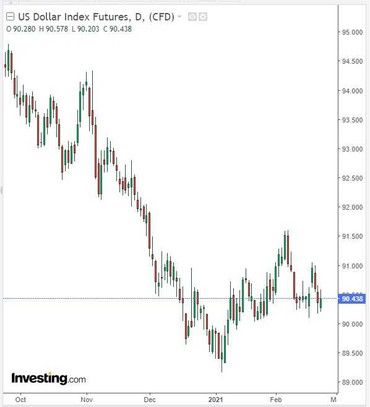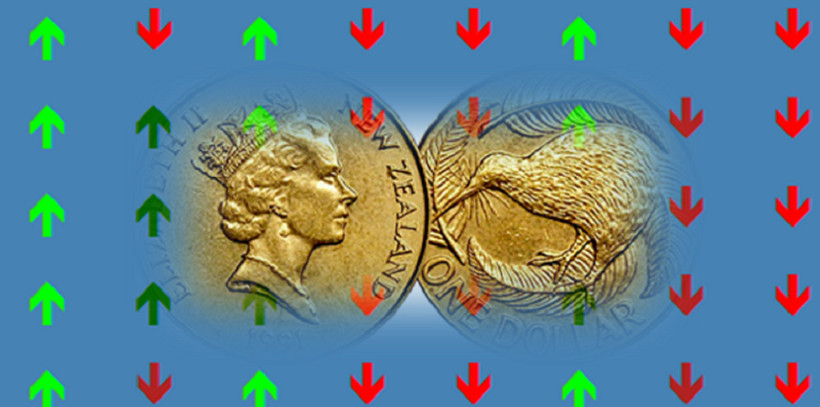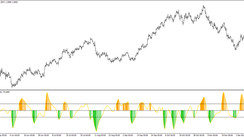New Zealand's Producer Price Index (PPI) released last Friday posted zero growth in Q4 after rising 0.6% in Q3. Usually, an increase in producer selling prices provokes an increase in retail prices for consumers, which provokes an increase in inflation. The high value of the indicator is a positive factor for the national currency, since the rise in inflation may force the country's central bank to consider raising the interest rate. Zero PPI is rather a negative factor for the country's currency. The previously released index of activity in the services sector (from Business NZ), which covers business conditions in the New Zealand services sector, also came out lower and below 50 (47.9 in January versus 49.1 in December and 46.6 in November), which is a negative factor for the NZD.
However, these data had practically no effect on the NZD quotes and the NZD / USD pair. At the moment and at the beginning of today's European session, it is traded near the 0.7300 mark, down from the 35-month high of 0.7338 reached during today's Asian session.
In general, the pair remains positive against the backdrop of a weak US dollar and positive investor sentiment regarding the further recovery of the global economy after the coronavirus pandemic.
Meanwhile, the US dollar recovered slightly during today's Asian session, receiving support from the continuing rise in US government bond yields.
Today, the DXY dollar index is rising for the 4th day in a row. At the beginning of today's European session, DXY futures were traded near the 90.43 mark, 7 points higher than the closing price on Friday.

The dollar continues to receive support from the growing yields on US government bonds. At the time of publication of this article, the yield on US 10-year government bonds was 1.372%, steadily increasing since August and from the levels of the local minimum near 0.500%.

Strong recent data from the US could help further strengthen the dollar, as investors perceive them as signals that the US is better than other countries in coping with the crisis caused by the pandemic. A more stable state of the American economy and its faster recovery in comparison with other countries will help to increase demand from foreign investors for American assets and the dollar as the national currency of the United States and the funding currency of the American stock market.
Additional support for the dollar may also be provided by talks that the Fed may begin to roll back large-scale stimulus earlier than expected.
Many market participants remain optimistic, which is also fueled by the expectation of additional fiscal stimulus measures, which should spur economic growth and company profits in 2021.
At the same time, some economists warn that the prices and quotations of the financial markets take into account the absolute likelihood of a recovery in the global economy, but it may still be a long way to a full recovery after the crisis. The coronavirus is constantly mutating, which can create problems with vaccinations. Therefore, new lockdowns are not excluded, and such sensitive sectors of the economy as tourism, retail trade and the entertainment industry will take years to recover before they reach pre-crisis levels. Thus, the recovery could be longer than some investors believe, with periods of dips and downward corrections in the stock market. And this will re-actualize dollar purchases as a defensive asset.
In addition, the crisis provoked by the pandemic in the economy and the labor market maintains an increased level of unemployment and surplus labor resources, which will take a long time to find employment, some economists believe.
From the news regarding the NZD, it is worth paying attention to the publication today (at 21:45 GMT) of the report on retail sales in New Zealand, which is considered an indicator of consumer spending. In general, a high reading is a positive factor for the NZD, while a low reading is a negative factor. Q3 2020 retail sales grew +28% after falling -14.8% in Q2 and -1.2% in Q1 due to Covid-19 quarantine restrictions. The NZD will strengthen if the data is better than the previous values and the forecast. A weak report will negatively affect the NZD. Forecast: +26.7% in Q4 2020. Despite the relative decline in the indicator, the data suggests an ongoing recovery in the New Zealand economy, which in itself is a positive factor for the NZD. At the same time, one cannot discount the moment that the market reaction to the publication of this report may be unpredictable.
If the US dollar continues to strengthen, the pair NZD / USD may decline. On Tuesday, Federal Reserve Chairman Jerome Powell's speech to Congress will draw close attention. Market participants will closely follow his speech, given the dynamics of US government bonds, which are increasing their yield.





